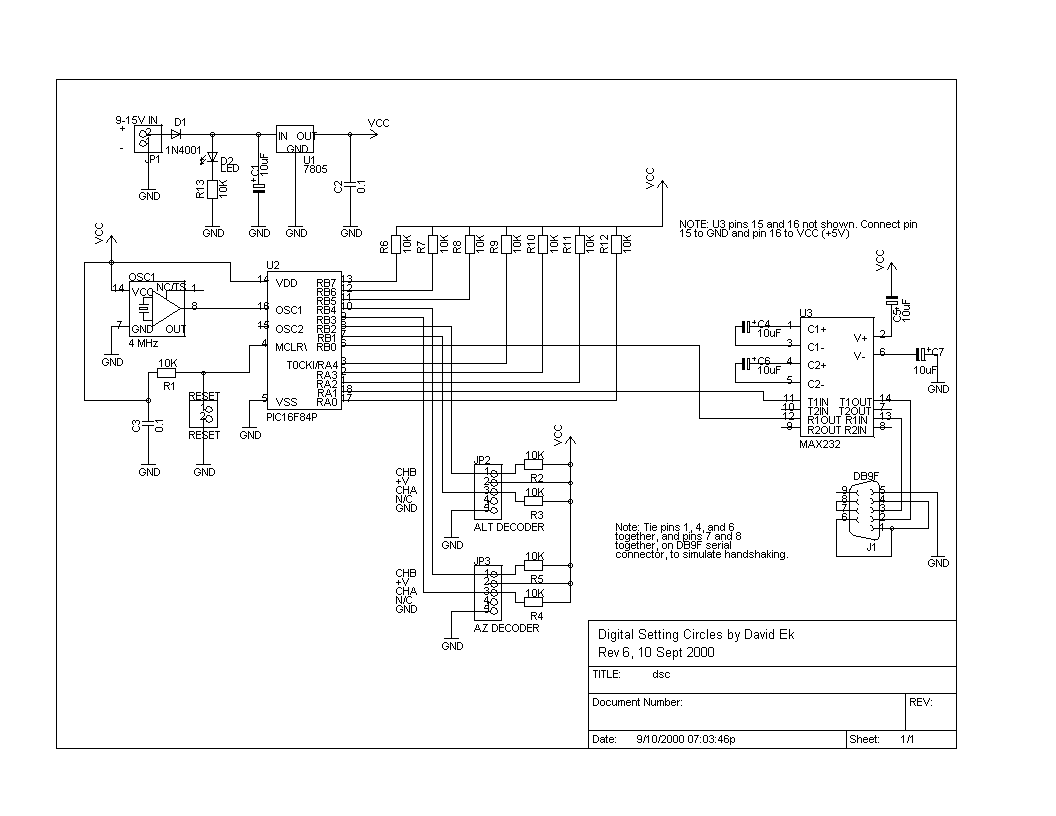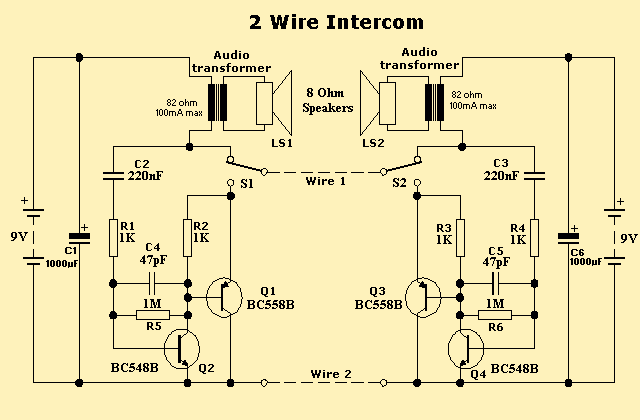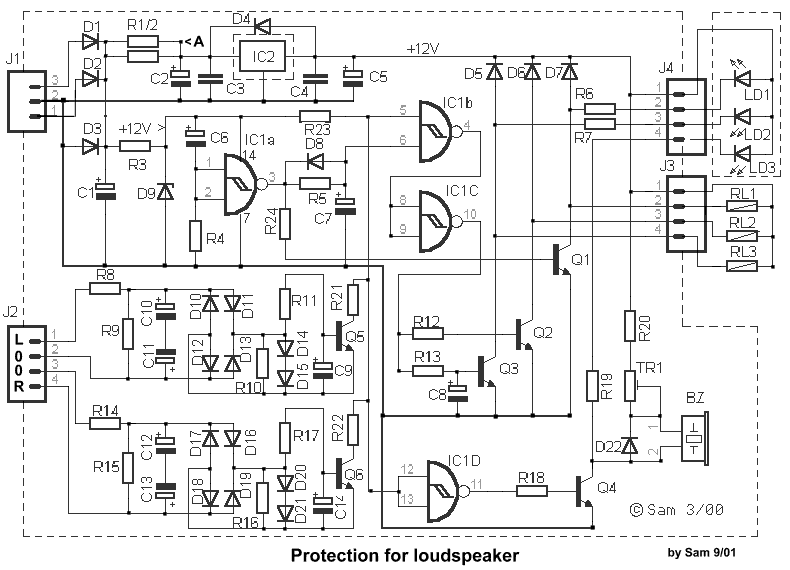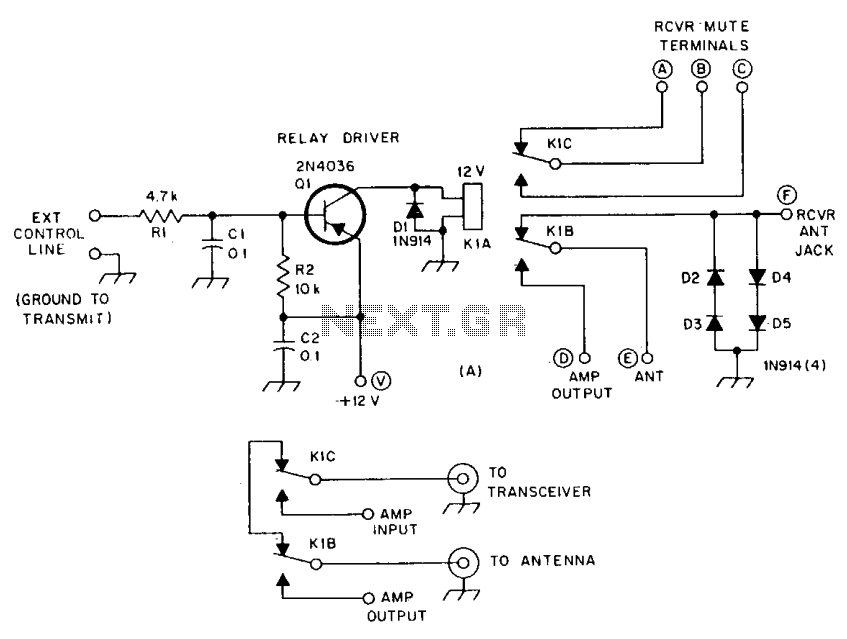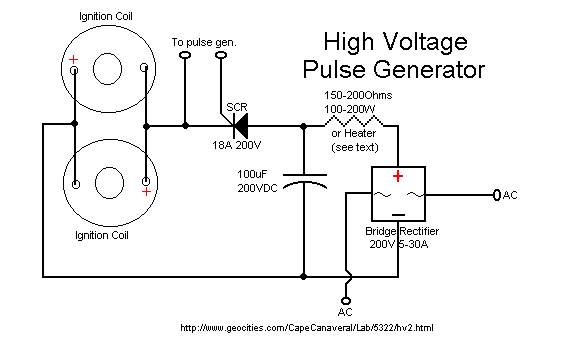
Camera external shutter circuit 555 timer
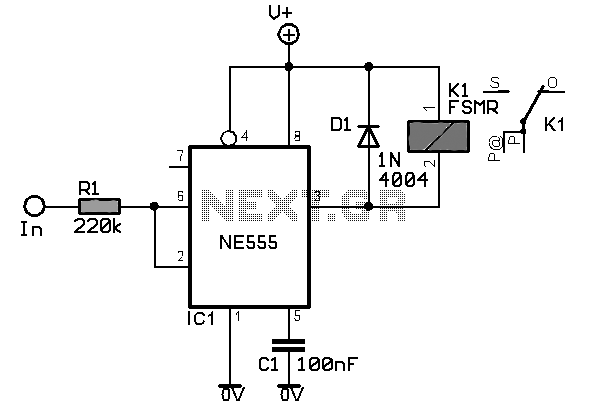
The camera has been wired with external shutter leads, and a method is needed to trigger them. These leads must be connected together via a relay at regular intervals, approximately every 2 seconds, starting from launch. A 555 timer chip configured as a multivibrator was identified as a potential solution. An acceleration switch from Adept Rocketry was selected for launch detection. Both the acceleration switch and timer are powered by a single 9V battery. The circuit was initially built and tested on a breadboard before being implemented using a Radio Shack PC board kit (Cat. No. 276-1576), which allows for etching a custom PC board. A 3/64" drill bit is necessary for creating the appropriate holes, as larger bits will complicate soldering. A socket for the 555 IC is recommended to prevent damage from soldering heat. The ASA3T acceleration switch can differentiate between a bump or jar and actual liftoff; however, an arming plug (1/8" Phono plug) was added for safety. If the timer starts accidentally after preparation, it could result in wasting a roll of film. The Yellow and Orange wires connect to the camera's shutter wires via a Dean’s connector, while the Red and Black wires connect to the output of the Adept ASA3T Acceleration Switch. This switch, oriented horizontally, detects liftoff and powers the timer circuit using the same 9V battery. A potentiometer on the ASA3T allows configuration of the timer to activate anywhere from 0.5 to 15 seconds after liftoff, with the minimum delay set when used in AYUCR.
The circuit design incorporates a 555 timer IC configured in astable mode, allowing it to produce a square wave output that can be used to trigger the camera shutter at specified intervals. The frequency of this output can be adjusted by changing the resistor and capacitor values connected to the timer. The use of an acceleration switch introduces a level of automation, ensuring that the camera begins to take pictures only after detecting the specific motion associated with liftoff.
The integration of the ASA3T acceleration switch is crucial, as it not only activates the timer but also prevents false triggers from minor disturbances. The design should ensure that the power supply is stable and that the connections are secure to avoid any interruptions during operation. The use of a custom PC board allows for a compact and organized layout, minimizing the risk of short circuits and enhancing reliability.
Additionally, using a socket for the 555 timer is advisable, as it facilitates easy replacement of the IC without the need for desoldering, which can be particularly important in field applications where the circuit may experience various environmental conditions. The arming plug serves as a safety feature, allowing the operator to disable the timer before launch, thus protecting against unintended activation.
In summary, this circuit effectively combines a 555 timer and an acceleration switch to automate the triggering of a camera shutter at regular intervals post-launch, with safety and reliability being key considerations in its design and implementation.Having wired the camera with external shutter leads I now needed a way to trip them. They needed to be tripped (i. e. connected together via a relay) at a regular interval, perhaps 2 seconds, starting at launch. I had read that a 555 timer chip configured as a multivibrator can work. I purchased Engineer`sas a timer. Mini-Notebook, 555 Timer Circuits and found the basis for the circuit I would need. For launch detection I chose an acceleration switch from Adept Rocketry. The acceleration switch and timer were both powered by a single 9V battery. I built and tested the circuit using a breadboard and then implemented it using a Radio Shack PC board kit (Cat. No. 276-1576). This allowed me to etch my own PC board. If you decide the make your own board for the circuit you will need a 3/64" drill bit. These can be a little tough to find but larger drill bits will make holes that are too large and make soldering very difficult.
I discovered this the hard way. I also recommed a socket for the 555 IC as heat from soldering can damage ICs. The ASA3T acceleration switch is smart enough to differentiate a bump or jar from liftoff but I chose to add an arming plug (1/8" Phono plug) just to be safe. Once prepped and loaded if the timer starts accidentally there is no way to stop it before it wastes a whole roll of film.
While not strictly necessary it is recomended. The Yellow and Orange wires terminate in a Dean`s connector and connect to the Camera`s shutter wires. The Red and Black pair of wires connect to the output of an Adept ASA3T Acceleration Switch. This device (shown below oriented horizontally) senses liftoff and powers the timer circuit using via the same 9V bettery powering the ASA3T.
There is a POT on the ASA3T that allows it to be configured to power up the timer anywhere from 1/2 to 15 seconds after liftoff. When used in AYUCR the time delay is set to the minimum. 🔗 External reference
The circuit design incorporates a 555 timer IC configured in astable mode, allowing it to produce a square wave output that can be used to trigger the camera shutter at specified intervals. The frequency of this output can be adjusted by changing the resistor and capacitor values connected to the timer. The use of an acceleration switch introduces a level of automation, ensuring that the camera begins to take pictures only after detecting the specific motion associated with liftoff.
The integration of the ASA3T acceleration switch is crucial, as it not only activates the timer but also prevents false triggers from minor disturbances. The design should ensure that the power supply is stable and that the connections are secure to avoid any interruptions during operation. The use of a custom PC board allows for a compact and organized layout, minimizing the risk of short circuits and enhancing reliability.
Additionally, using a socket for the 555 timer is advisable, as it facilitates easy replacement of the IC without the need for desoldering, which can be particularly important in field applications where the circuit may experience various environmental conditions. The arming plug serves as a safety feature, allowing the operator to disable the timer before launch, thus protecting against unintended activation.
In summary, this circuit effectively combines a 555 timer and an acceleration switch to automate the triggering of a camera shutter at regular intervals post-launch, with safety and reliability being key considerations in its design and implementation.Having wired the camera with external shutter leads I now needed a way to trip them. They needed to be tripped (i. e. connected together via a relay) at a regular interval, perhaps 2 seconds, starting at launch. I had read that a 555 timer chip configured as a multivibrator can work. I purchased Engineer`sas a timer. Mini-Notebook, 555 Timer Circuits and found the basis for the circuit I would need. For launch detection I chose an acceleration switch from Adept Rocketry. The acceleration switch and timer were both powered by a single 9V battery. I built and tested the circuit using a breadboard and then implemented it using a Radio Shack PC board kit (Cat. No. 276-1576). This allowed me to etch my own PC board. If you decide the make your own board for the circuit you will need a 3/64" drill bit. These can be a little tough to find but larger drill bits will make holes that are too large and make soldering very difficult.
I discovered this the hard way. I also recommed a socket for the 555 IC as heat from soldering can damage ICs. The ASA3T acceleration switch is smart enough to differentiate a bump or jar from liftoff but I chose to add an arming plug (1/8" Phono plug) just to be safe. Once prepped and loaded if the timer starts accidentally there is no way to stop it before it wastes a whole roll of film.
While not strictly necessary it is recomended. The Yellow and Orange wires terminate in a Dean`s connector and connect to the Camera`s shutter wires. The Red and Black pair of wires connect to the output of an Adept ASA3T Acceleration Switch. This device (shown below oriented horizontally) senses liftoff and powers the timer circuit using via the same 9V bettery powering the ASA3T.
There is a POT on the ASA3T that allows it to be configured to power up the timer anywhere from 1/2 to 15 seconds after liftoff. When used in AYUCR the time delay is set to the minimum. 🔗 External reference
Warning: include(partials/cookie-banner.php): Failed to open stream: Permission denied in /var/www/html/nextgr/view-circuit.php on line 713
Warning: include(): Failed opening 'partials/cookie-banner.php' for inclusion (include_path='.:/usr/share/php') in /var/www/html/nextgr/view-circuit.php on line 713
